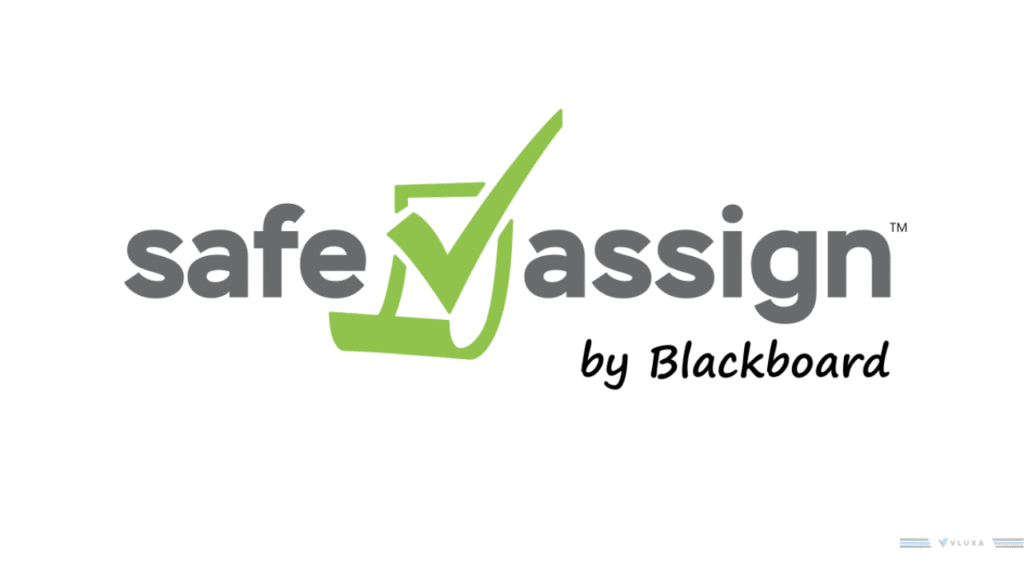The advancement of artificial intelligence (AI) has revolutionized various industries, including the realm of plagiarism detection. Tools like SafeAssign use an AI classifier to detect plagiarism in content generated by other AI systems. This includes the ability to assess if SafeAssign can effectively detect AI-generated textual content, particularly AI-generated content from ChatGPT. Recognizing that the enhancement of SafeAssign to detect ChatGPT content is a testament to this AI revolution.
In this article, we delve into the intricacies of SafeAssign’s detection mechanism. We explore the challenges and potential enhancements for detecting ChatGPT-generated content. This includes evaluating how SafeAssign may improve to better capture nuances in texts created by ChatGPT. We assess if SafeAssign can effectively detect such sophisticated chatbot-generated content like ChatGPT, indicating collaboration between SafeAssign developers.
The focus is on whether SafeAssign detects ChatGPT content accurately and in a nuanced manner. This includes the ability to discern between original student work and AI-generated content from ChatGPT, through the lens of similar AI detection capabilities.
Also Discover how ChatGPT revolutionizes dialogue with innovative optimization techniques in ‘ChatGPT: Optimizing Language Models for Dialogue’ – dive deeper now!
SafeAssign’s Evolution and Importance in Academic Integrity
SafeAssign’s evolution to keep pace with AI writing tools signifies important progress. This underscores the importance of SafeAssign’s AI detection capabilities in academic integrity. It also highlights how SafeAssign can improve the detection of content created by advanced AI models like ChatGPT. This includes whether SafeAssign generates an originality report that accurately reflects these efforts in detecting AI-generated content from ChatGPT and similar AI. Emphasis is placed on fostering collaboration between SafeAssign developers.
Challenges in Detecting ChatGPT Content with SafeAssign

SafeAssign, a widely-used plagiarism detection tool utilized in educational settings and part of Blackboard, raises the question of its capability to detect content generated by ChatGPT, an AI language model. This highlights the need for improved AI system integration. It also questions whether SafeAssign generates an originality report that accurately reflects the detection of such content, including ChatGPT samples. The focus is on improving how SafeAssign can detect instances where students use ChatGPT content. This includes using ChatGPT to create assignments and the integration of a large dataset of ChatGPT samples.
Can SafeAssign Detect ChatGPT-Generated Content?
SafeAssign relies on a sophisticated detection mechanism to identify potential instances of plagiarism, showcasing its AI detection capabilities, including the advanced algorithms necessary to improve how SafeAssign can detect ChatGPT, and investigating if there are instances where SafeAssign can’t adequately identify content generated by such advanced AI models. This highlights the ongoing need for SafeAssign to adapt its capabilities to better detect instances where students submit chat GPT content, recognizing the unique challenges posed by ChatGPT and similar AI technologies.
However, detecting content produced by AI models like ChatGPT presents unique challenges due to the nature of text generation algorithms, a task SafeAssign is adapting to with its evolving AI system, aiming to enhance the SafeAssign score for accuracy and assessing if SafeAssign can effectively detect such AI-generated content accurately. Emphasis is placed on adapting SafeAssign to better detect chat GPT content, including AI-generated content from ChatGPT or any other AI, reinforcing its role as a dedicated AI content detector and highlighting the necessity for SafeAssign to evolve alongside specific chatbot tools like chatGPT.
This includes strategies against This is where SafeAssign’s continual updates and adaptions become crucial in tackling text created by advanced AI models like ChatGPT, illustrating the vital role of updating AI detection capabilities. The goal is to refine SafeAssign’s ability to effectively detect instances where students use chat GPT content, incorporating a large dataset of ChatGPT samples for enhanced accuracy. This endeavor is vital as SafeAssign heavily relies on existing literature and databases to identify AI-generated content, including submissions of chatGPT samples.
One of the primary hurdles in detecting ChatGPT content is its ability to mimic human writing style effectively, making it challenging for traditional plagiarism detection tools like SafeAssign to distinguish between original and AI-generated content, leading to questions about whether SafeAssign may not detect some subtleties in chatbot-generated texts.
This issue underlines the complexity of ensuring SafeAssign detects chat GPT content effectively, despite ChatGPT generating fundamentally unique text. Although SafeAssign is adapting, challenges remain in accurately identifying content sourced from chatGPT and safeassign are two technologies at the forefront of this issue, SafeAssign being a widely-used tool.
To enhance SafeAssign’s detection capabilities regarding ChatGPT-generated content, potential solutions may involve integrating advanced AI content detectors that specifically target text created by AI models. Such advancements could significantly improve how SafeAssign detects chat GPT content, especially in recognizing AI-generated content from ChatGPT, similar to how dedicated AI content detectors operate.
How Does AI Detection Work in SafeAssign?
AI plays a pivotal role in modern plagiarism detection tools, including SafeAssign, reinforcing the necessity of integrating advanced AI detection capabilities to better understand and tackle issues like why SafeAssign cannot detect ChatGPT efficiently. Specifically, it is paramount to investigate how SafeAssign can improve to detect chat GPT content more effectively, leveraging similar AI technologies and a large dataset of ChatGPT samples, perhaps by comparing pasted text from ChatGPT.
This examination includes considering The integration of AI content detection algorithms enables SafeAssign to efficiently scan and analyze vast databases of academic papers and detect instances of plagiarism, but it must evolve to address its limitations with content created by ChatGPT, enhancing its ability to target chatbot-generated content like ChatGPT. This evolution is central to ensuring SafeAssign can detect instances where students submit chat GPT content effectively, shifting the focus towards using advanced AI detection methods to recognize chatGPT samples.
When compared to other AI tools, SafeAssign stands out for its seamless integration of AI technology into its plagiarism detection process, offering educators and institutions a reliable tool to uphold academic integrity. This integration is especially pertinent in discussions on how SafeAssign can detect instances where students submit chat GPT content with high accuracy, akin to detecting instances of copied content.
Limitations of SafeAssign in ChatGPT Detection
While SafeAssign excels in detecting traditional forms of plagiarism, its current capabilities in identifying ChatGPT-generated content may be limited, raising concerns about whether SafeAssign can’t fully grasp the intricacies of text from ChatGPT. Investigating how SafeAssign can detect instances where students submit chat GPT content becomes a pivotal focus for overcoming these limitations, including the ability to detect instances of copied and AI-generated content. Understanding SafeAssign’s existing detection limitations, especially its challenges with content created by ChatGPT, is crucial in addressing the challenges posed by AI-generated text and assessing whether SafeAssign may not detect certain advanced AI-generated content effectively. This scenario underlines the question: does SafeAssign detect content generated by an AI like ChatGPT effectively?
The intricate nature of ChatGPT-generated content presents a significant challenge for SafeAssign, requiring innovative solutions to enhance its ability to detect and differentiate AI-generated text from original content.
To overcome these limitations, potential solutions may involve refining SafeAssign’s algorithms to specifically target and identify text generated by ChatGPT, demonstrating a forward movement in how SafeAssign primarily focuses on combating AI-induced challenges.
Enhancing Plagiarism Detection with SafeAssign and ChatGPT
A collaborative approach leveraging both SafeAssign and ChatGPT can lead to improved plagiarism detection outcomes, embodying SafeAssign’s potential to improve detection of content produced by ChatGPT. Such synergy highlights the need for both technology creators and users to understand how SafeAssign can detect content generated by AI platforms like ChatGPT and if By combining the strengths of each tool, educators can enhance their ability to identify and address instances of academic misconduct effectively, highlighting the collaborative potential when using SafeAssign alongside AI-driven text generation understanding.
SafeAssign’s evolution to better detect ChatGPT content is essential in adapting to the evolving landscape of AI-driven text generation, demonstrating how SafeAssign primarily focuses on upgrading its AI classifier to detect these new forms of plagiarism. As the technology behind SafeAssign progresses, it continues to set new benchmarks in identifying and analyzing content created by AI, including chatbots like ChatGPT, a testament to its advancing AI detection capabilities.
The impact of AI tools like Chat GPT on plagiarism detection in educational settings underscores the need for continuous improvement and innovation, particularly in how SafeAssign can adapt to recognize content created by ChatGPT. This is especially true for systems like SafeAssign, which must evolve to detect sophisticated text generated by chatbots like ChatGPT, enhancing its AI detection capabilities, marking the importance for SafeAssign to identify specific patterns of AI-generated content.
Utilizing SafeAssign and ChatGPT: A Comprehensive Analysis
Exploring the benefits and drawbacks of utilizing SafeAssign and ChatGPT together provides valuable insights into the effectiveness of AI-assisted plagiarism detection, particularly focusing on the use of SafeAssign to detect AI-generated text. This is particularly relevant as SafeAssign can detect texts created by ChatGPT, showcasing its capability in the academic sector and its effectiveness as a SafeAssign plagiarism checker, often reflected in the SafeAssign score. Balancing the strengths of both tools is essential in ensuring accurate and efficient detection of plagiarized content, prompting an adaptation of SafeAssign to identify more subtle instances of AI-generated plagiarism.
The collaborative use of SafeAssign and ChatGPT signifies the future trends in AI-driven plagiarism detection tools, highlighting the evolving landscape of academic integrity and technology’s role in upholding it.
FAQs
Q: Can safeassign detect chatgpt content?
A: Safeassign is capable of detecting chatgpt content as it is one of the AI tools within its detection capabilities, representing a pivotal part of how SafeAssign checks and curbs AI-generated academic dishonesty. Moreover, SafeAssign is a plagiarism detection tool that schools often use, suggesting its efficacy against chatbot-generated texts and emphasizing its role as a primary SafeAssign plagiarism checker, although it cannot detect ChatGPT efficiently.
Q: How does safeassign work in detecting chatgpt content?
A: SafeAssign primarily uses algorithms to analyze and compare submitted text with a vast database of academic and web content, including ChatGPT generated content, to identify potential plagiarism, showing that SafeAssign may be able to detect such content. SafeAssign focuses on comparing content generated by an AI like ChatGPT to ensure academic integrity, showing that SafeAssign primarily focuses on comparing such AI-generated content against academic standards.
Q: Can safeassign improve its detection of chatgpt content over time?
SafeAssign can continuously improve its detection of ChatGPT content by leveraging AI technology and updates to its detection algorithms, serving as a cornerstone for SafeAssign to enhance its AI system.
Q: Is there a link between chatgpt and safeassign when it comes to plagiarism detection?
A: Chat GPT and SafeAssign are connected in the sense that SafeAssign is able to detect plagiarism in Chat GPT generated content through its detection capabilities, although there’s room for improvement in how SafeAssign can detect ChatGPT.
Q: How can educators and students use chatgpt in conjunction with safeassign?
A: Educators and students should use ChatGPT responsibly and ensure that any text generated by ChatGPT is properly cited and referenced to avoid plagiarism detection by SafeAssign, acknowledging the partnership between SafeAssign developers and OpenAI in efforts to enhance detection and understanding. This emphasizes the importance of accountability when utilizing AI writing tools like Chat GPT in scholastic endeavors, and how institutions rely on systems like SafeAssign, a widely used plagiarism detection tool, for maintaining academic integrity.
Q: Is safeassign capable of effectively detecting AI-generated content like chatgpt?
A: SafeAssign can detect AI-generated content, such as that created by Chat GPT, through its sophisticated plagiarism detection algorithms, although it strives to enhance how SafeAssign can detect ChatGPT more effectively. Notably, SafeAssign is a plagiarism checker specifically designed to catch instances of academic dishonesty or improperly cited AI writing, where assessing the SafeAssign score becomes crucial for educators.
Q: What role does safeassign play as a plagiarism checker in relation to chatgpt and other AI tools?
A: Safeassign acts as a widely used plagiarism checker that can detect content generated by AI tools like chatgpt, helping to maintain academic integrity, with SafeAssign checks for accuracy and fairness.






